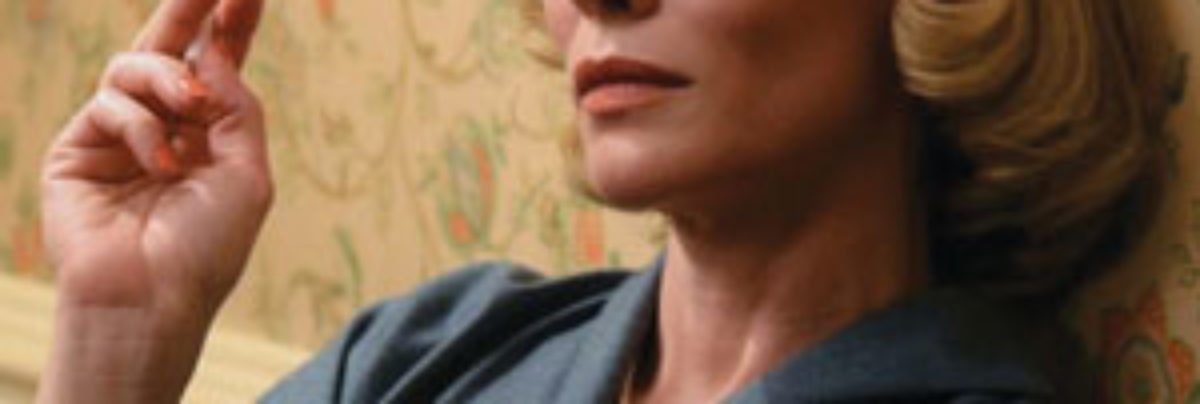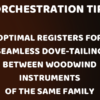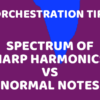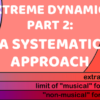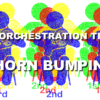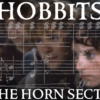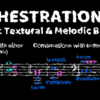Carol may or may not be the best film of 2015 (its snub for Best Picture category is one of many unforgivable oversights this year). – but it is certainly the most stylish. It’s a period piece that expertly recreates the exact year and place of its setting (and writing of the source book, Patricia Highsmith’s The Price of Salt), Manhattan of 1952. This was when the 50’s were still learning how to be the 50’s: cars are still bloated and round rather than long and boxy, and the radio hasn’t learned the language of R&B yet. Men strut around with cocky postwar bravado, and women with a certain smartness of look. There isn’t a single detail out of place, from the label on a roll of Kodak film to cans of beer that are pierced with a triangle-cutting can-opener. But there is one element that is completely out of time: the music.
To score this pitch-perfect retelling of a classic 1950’s tale of forbidden love, director Todd Haynes turned to the Coen brothers’ standby Carter Burwell. Into this world of “I Like Ike” posters and snap-brim hats, Burwell injects a heavy dose of post-minimalist lyricism. Forget about the yearning, often haunting torch songs of the era – the action is played out to a tiny 18-piece orchestra of 1131 winds, a horn, harp, piano, and a string quintet (occasionally bulked up to a nonet). This ensemble delivers cues that weave little hypnotic essays that add a dose of obsession to the film’s very honest themes of insecurity, personal risk, and self-discovery.
The basic themes and approach are laid down at the start of the film, and rarely vary from the model of the “Opening” track: slow, static bass lines, strings alternating over close intervals, piano punctuating different stresses within a 6/8 bar, and very simply-stated woodwind melodies. The rhythm and cyclical chordal patterns are extremely regular: Cm – Ab – Bb – Eb 6/4 – G 6/3, and so on. There’s an advantage to this overall approach: the simplicity of the arrangement speaks of greater human intimacy and directness of emotion. The slow motoristic energy gives the action a dreamlike quality, as if we’re stepping directly into a world of someone’s reminiscence. In very straightforward language, Burwell is building the onscreen characters, and giving them emotional hooks to return to throughout the film, though there’s very little in the way of musical development to chart the emotional journey.
If all this sounds eerily familiar, it’s because in this case Burwell owes an enormous debt to Philip Glass, especially his score The Thin Blue Line. There’s no way that this could be anything else but a conscious lift. It’s not actionable theft, really, because Burwell’s score doesn’t use the same exact themes, chord progressions, or orchestration – but the approach is near-identical in places. Have a listen to the two embedded tracks above and hear for yourself. It’s all the same, right down to Glass’s penchant for returning to the tonic with a slightly grinding V 6/3 chord. Of course, Burwell is only one of dozens of composers to imitate Philip Glass since his breakout success with The Thin Blue Line and Koyanisqaatsi. But certainly this is a case where the stakes of the imitation game are very high – an art film with two superstar lead actresses that’s been elevated to major release and industry recognition.
Of course, there’s a lot more to the soundtrack than this. There’s another type of hook, somewhat well-worn by now but still serviceable: driving around in cars, feeling deep emotions to sparse, deeply thoughtful music. Burwell excels at this type of scoring, and he delivers here in several tracks, as the 1950’s was about nothing if not driving around in cars half the time. The track 02 “Taxi” is a classic example, with simple pairs of contrasting chords on piano, eventually joined by chamber winds and strings. But my favourite from this bag of car music was the third track “To Carol’s” with its process piano track played by Burwell himself, into which is gradually injected a hallucinatory swatch of late 40’s torch song. I felt that was one place in which the music really touched the period of the film in a direct way, and it wasn’t just because of that quote.
Much of the rest of the soundtrack references the first two tracks “Opening” and “Taxi” in one way or another, and there’s little more to cover from the orchestration reviewer’s perspective. Of course, there are some great little bits of late 40’s and early 50’s pop and swing, and some attempts to make the music more period-relevant by adding vibes here and there. And there are several deviations from the set patterns at the beginning. One track is particularly worth examining: “Gun.” It’s a great example of how much darkness and menace can be gleaned from such a limited group of players. Dark, low tones on cello, double bass and left hand piano drag along with murky menace, underlying gestures on viola and sul G violins, chalumeau register clarinet, and first-octave flute. This cue accompanies a rather tragic emotional confrontation, when the lead characters discover their secret affair has been exposed by a traitor. I felt this scoring to be quite effective, as it didn’t oversell the defiance of the title character nor her final acceptance of the situation by the end of the scene.
Though the main thrust of the soundtrack is clearly derivative of Philip Glass, and it’s not Burwell’s best effort by far (many other films of his are much better, such as Millier’s Crossing and Fargo), I respect the effort that he made here, and the courage to merge the style of the film with that musical genre. I’ve linked an post from Burwell’s own blog below, plus a video of him discussing the process of scoring Carol. Does it have any chance of winning an Oscar? Answer: It’s Complicated. Find out why in the last post of this series, 2016 Oscars Film Score Nominee Roundup, coming your way at the end of the week.
http://www.carterburwell.com/projects/Carol.shtml

